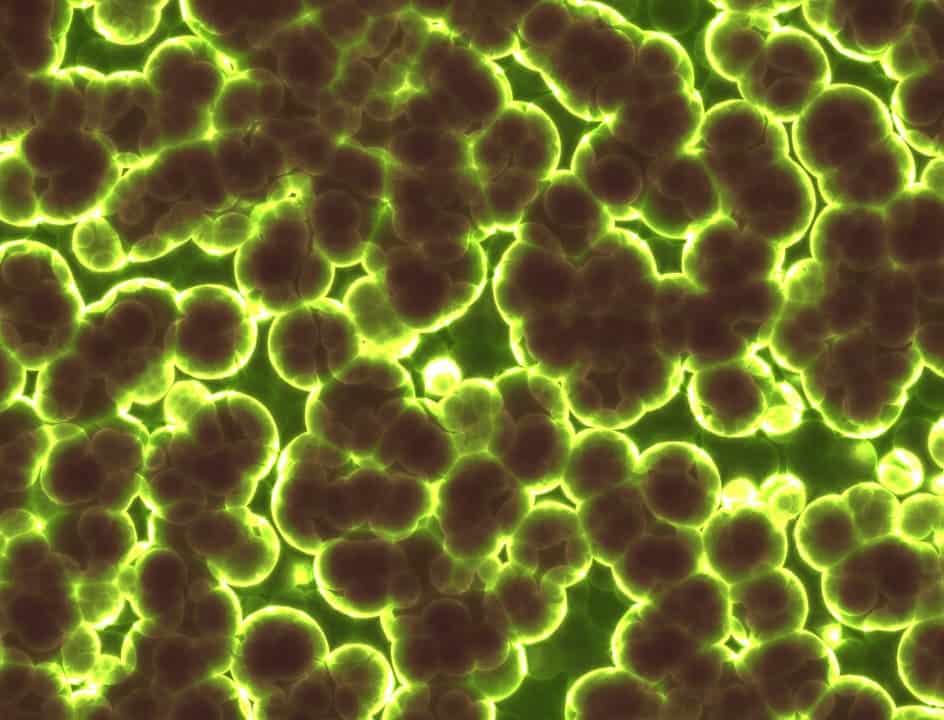Small populations of bacteria respond differently to antibiotics than larger ones, a new study reports — offering clues as to why it’s so hard to kill these bugs off.

A population of bacteria that sports 100 or fewer cells doesn’t play by the rules; at least, not as far as antibiotics are concerned. Larger populations tend to respond homogeneously throughout their members, but with small populations, even antibiotics are more of a hail mary, new research shows — sometimes they work, sometimes they don’t, and it seems to be completely down to chance.
Strength in (small) numbers
Which, understandably, is not an ideal state of affairs for us hairless bipeds. Especially because for decades, the prevailing wisdom held that reducing the number of bacteria down to a few hundred individuals would be enough for the immune system to come in and carry the day.
“More recently, it became clear that small populations of bacteria really matter in the course of an infection,” says lead author Minsu Kim.
“The infectious dose — the number of bacterial cells needed to initiate an infection — turned out to be a few or tens of cells for some species of bacteria and, for others, as low as one cell.”
The researchers wanted to understand why antibiotic treatments sometimes work, and sometimes fail. They’ve started with the usual culprits: variations in immune responses between people, or possible mutations of bacteria that make them more virulent in some cases. Kim, however, wasn’t impressed. She suspected that something else was at work here, and her suspicions only became stronger when researchers working with model organism C. elegans recorded unexpected treatment failures even for antibiotic-susceptible infections.
Focusing their research only on small populations of bacteria, the team discovered that their interaction with antibiotics is based on a different dynamic than that of large populations. The researchers observed that antibiotics induce fluctuations in the density of bacterial populations as they kill off individuals, which they expected; however, they also noted that when the population’s rate of growth overcame the rate at which the antibiotics killed individuals, clearance failed.
Armed with this knowledge, they created a low-dose cocktail of drugs to preempt this quirky dynamic. This mix contained a bactericide (a compound that kills bacteria) and bacteriostat (a substance that slows the growth of bacteria). Taken together, these were intended to limit the random fluctuation seen by the team, and thus make it more probable to keep the population’s overall death rate higher than the growth rate. They then took this cocktail to the lab to see how it works. First, they showed that it was effective on a small population of drug-susceptible E. coli. Then they applied it to a clinically-isolated strand of antibiotic resistant E. coli — again, the cocktail worked.
“We’ve shown that there may be nothing special about bacterial cells that aren’t killed by drug therapy — they survive by random chance,” said Kim. “This randomness is a double-edged sword. On the surface, it makes it more difficult to predict a treatment outcome. But we found a way to manipulate this inherent randomness in a way that clears a small population of bacteria with 100 percent probability.”
“By tuning the growth and death rate of bacteria cells, you can clear small populations of even antibiotic-resistant bacteria using low antibiotic concentrations.”
The team hopes that their model cocktail can help guide development of more refined antibiotic treatment courses. Their end goal is to help researchers develop treatments that use lower doses to kill an infection entirely, for as many different infections as possible.
“It’s important because if you treat a bacterial infection and fail to kill it entirely, that can contribute to antibiotic resistance,” says Kim.
Not all antibiotics available today fit the model they’ve developed, however. More research is needed get this approach ready for use in a clinical setting.
Antibiotic resistance is a huge and growing problem. Essentially, it means that at some point in the future our drugs won’t be able to reliably protect against bacteria — or they could become useless against them altogether. Antibiotic resistance could lead to 10 million people dying each year by 2050, a total health care burden of $100 trillion, and a reduction of 2% to 3.5% in world Gross Domestic Product (GDP) by the same year.
The paper “Antibiotic-induced population fluctuations and stochastic clearance of bacteria” has been published in the journal eLife.






